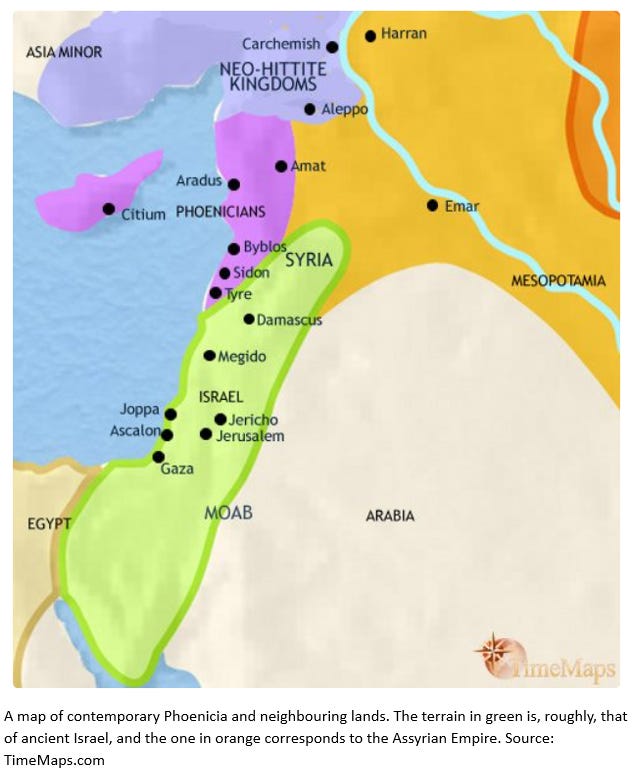Welcome! I'm David Roman and this is my History of Mankind newsletter. If you've received it, then you either subscribed or someone kind and decent forwarded it to you.
If you fit into the latter camp and want to subscribe, then you can click on this little button below:
To check all previous newsletters in the History of Mankind, which is pretty long, you can click here.
The Phoenician city-states were all set on a long strip of coastal land from north of Aradus/Arwad[1] to south of Jaffa, in modern Israel. Inhabited by a Semite Canaanite population descending from original Natufians, plus Indo-European and Hurrian components as well as waves of migrants from Arabia, Phoenicians were remarkably open to contact with foreigners, but wary of protecting their homes from unwelcome visitors: one striking feature of Phoenician settlements is that, almost without exception, they were founded on rocky promontories, easy to defend and hard to land on unless one knows the coastline well.
These cities were ruled by kings that may have not had quite as absolute a power as they’d like, and secured grain from inland settlements in exchange for the wares they produced. Most of their trade was conducted with their well-regarded cargo ships, some of which may have been able to carry loads of up to 450 tons as early as 1200 BC; Phoenicians were also adept at fighting enemies with narrower, lighter warships equipped with rams and manned by some fifty men using oars for speed and maneouver[2]. Their navigation skills were legendary: Greeks called Polaris, the Pole Star, the “Phoenician Star,” a sign of respect for the Phoenician ability to navigate the seas using the stars.
Few voyages took place in winter when visibility was poor or the weather bad with unfavorable winds; in fact, winter sailing in the Mediterranean was not widespread until the 16th century AD[3]. In other seasons, hops from friendly destinations were preferred, which led to the creation of a string of Phoenician colonies and posts across the southern Mediterranean, all the way to southern Spain.
A voyage from Tyre – the largest and, together with Sidon, dominant Phoenician city for much of the 1st millennium BC – all the way there would last about 3 months and, allowing for the need to winter at the destination, it took almost a year to complete the return trip.
Keep reading with a 7-day free trial
Subscribe to A History of Mankind to keep reading this post and get 7 days of free access to the full post archives.




